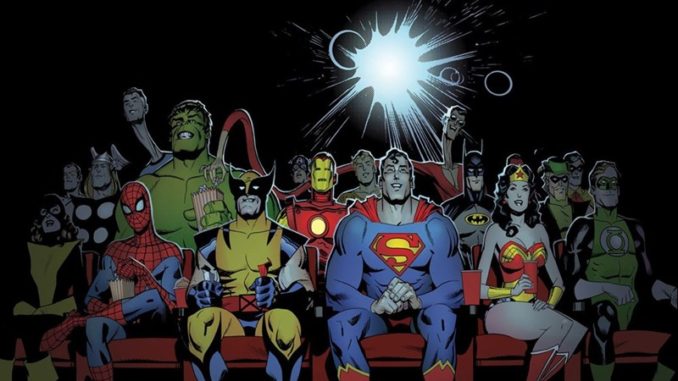
Since the birth of the genre, comic book films have seen a great deal of growth in many aspects, such as quantity, quality, and financial success. This genre has been a recent trend in Hollywood’s slate that is comparative to the success of Westerns in the ‘50s and ‘60s. It is fascinating when movements like this occur in Hollywood, as it provides insight as to what is particularly in the zeitgeist of a culture at the time.
However, movies based on comic books and superheroes have been around since at least 1966 (Batman); the recent rise in the genre might be more telling of these characters and stories’ importance in modern culture. Though both Marvel and DC Comics have been around since the 1930s and these characters are an integral part of pop culture for decades, it is interesting to see why their stories have been so illustrious lately in the last ten year. Hollywood has a specific power that is both representative and responsible for the overall public’s taste.
The first significant wave of comic book films that came out, X2: X-Men United (2003) and Spider-Man (2002), served as a testing ground to see if the public was receptive to these types of film. Needless to say, they did exceptionally well, with Spider-Man making $825 million and X2: X-Men United gaining $407 million. The box office response made it clear that an audience, indeed, had a craving for films like this. Most of these films garnered sequels and most of them became trilogies. It would not be until 2008 that the genre introduced the public to the idea of shared universes.
As Iron Man (2008) was released, a new possibility was on the horizon; a shared connected universe. It would be a template that would span over a handful of solo films, and subsequently, each character would appear in an ensemble film. It was a concept that has not been attempted before at this large scale and was a risk when it was initiated. A risk that has seemed to have paid off, as multiple studios have attempted the practice to create their own cinematic universe with their properties.
Yet, none have taken off the way Marvel’s universe has. The only two that have come close to mirroring the practice are the Star Wars franchise and the DC Extended Universe (DCEU). Though Star Wars has a connected universe, it does not follow the template strictly. The DCEU is one that has tried mirroring as best as it could and has seen success doing so. Films like Aquaman (2018) made $1.148 at the box office, showing the formula’s strength.
But what does the abundance in this genre say about our state of culture? It may suggest that audiences are seeking figures of moral righteousness, as reality tends to skew greyer. Audiences enjoy these movies to see the ideals of what people should be; beacons of inspiration and hope that things will get better. Reality can be extremely difficult to navigate in certain moments, but storytelling has always given human beings a reason to find hope.
The rise of the new prominent genre in Hollywood is a direct reflection of what is culturally significant. That is why many trends have come and gone as the priorities of a society shift through the decades.



